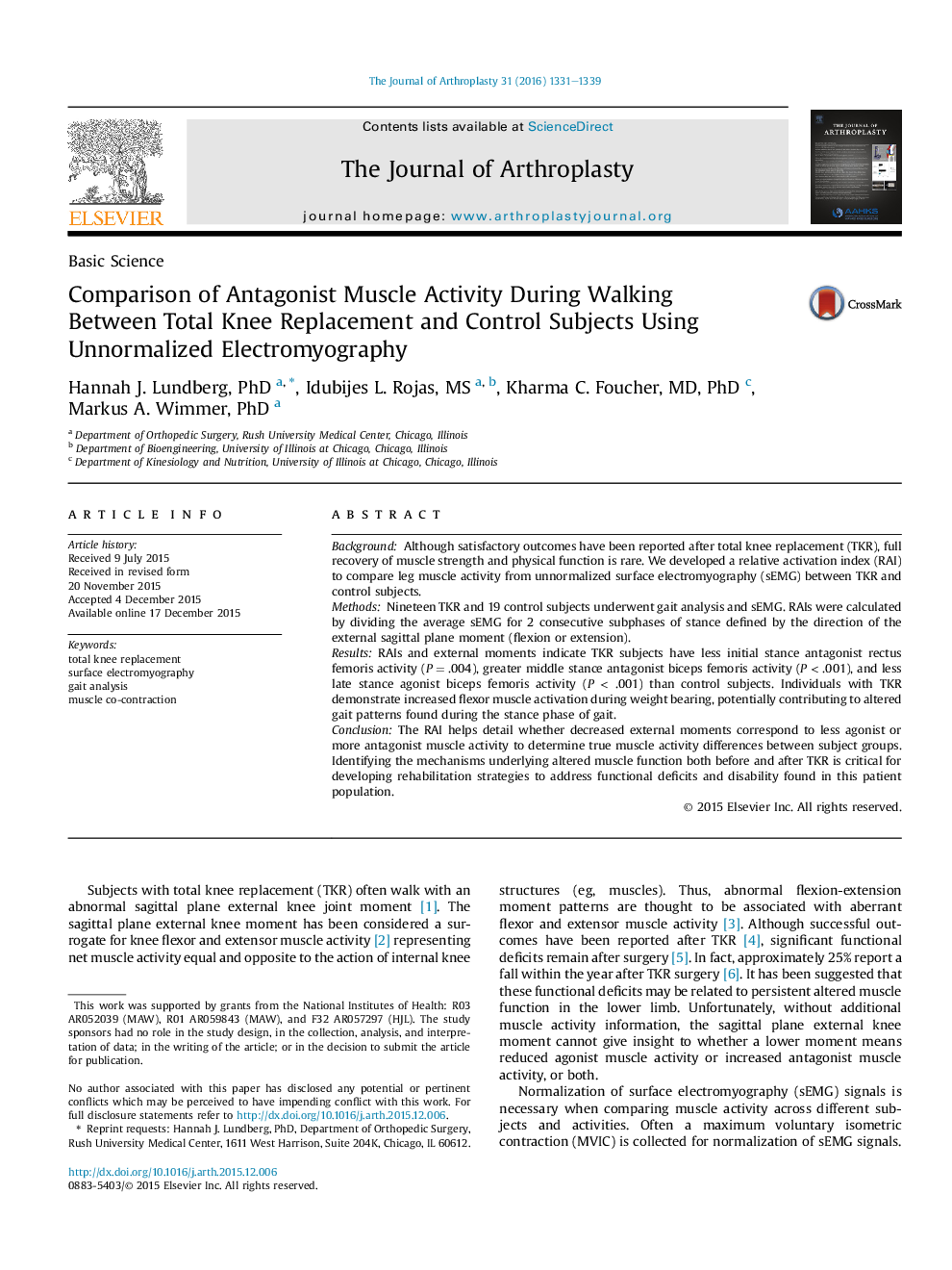| Article ID | Journal | Published Year | Pages | File Type |
|---|---|---|---|---|
| 4059897 | The Journal of Arthroplasty | 2016 | 9 Pages |
BackgroundAlthough satisfactory outcomes have been reported after total knee replacement (TKR), full recovery of muscle strength and physical function is rare. We developed a relative activation index (RAI) to compare leg muscle activity from unnormalized surface electromyography (sEMG) between TKR and control subjects.MethodsNineteen TKR and 19 control subjects underwent gait analysis and sEMG. RAIs were calculated by dividing the average sEMG for 2 consecutive subphases of stance defined by the direction of the external sagittal plane moment (flexion or extension).ResultsRAIs and external moments indicate TKR subjects have less initial stance antagonist rectus femoris activity (P = .004), greater middle stance antagonist biceps femoris activity (P < .001), and less late stance agonist biceps femoris activity (P < .001) than control subjects. Individuals with TKR demonstrate increased flexor muscle activation during weight bearing, potentially contributing to altered gait patterns found during the stance phase of gait.ConclusionThe RAI helps detail whether decreased external moments correspond to less agonist or more antagonist muscle activity to determine true muscle activity differences between subject groups. Identifying the mechanisms underlying altered muscle function both before and after TKR is critical for developing rehabilitation strategies to address functional deficits and disability found in this patient population.
